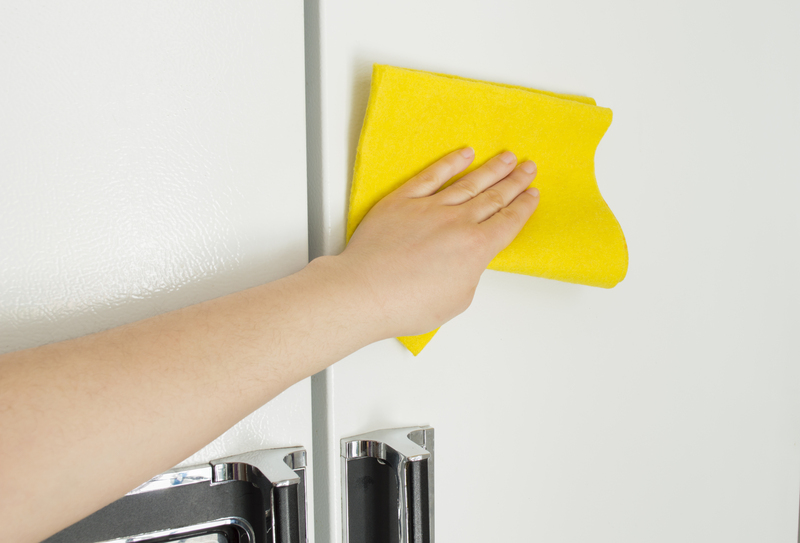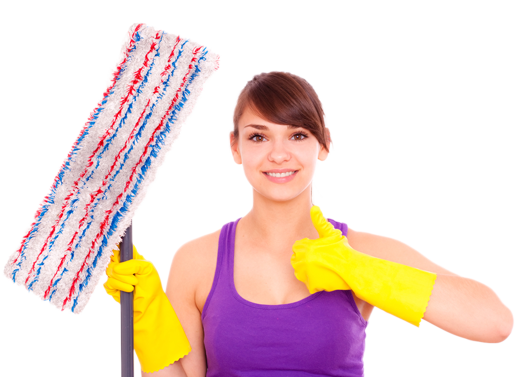The Ultimate Guide to Cleaning Curtains with Ease
Posted on 26/05/2025
The Ultimate Guide to Cleaning Curtains with Ease
Keeping your curtains clean not only enhances the appearance of your home but also contributes to a healthier indoor environment. Whether you have luxurious drapes, sheer window coverings, or sturdy blackout curtains, they all attract dust, allergens, and even odors over time. In this comprehensive guide, you will discover the easiest and most effective ways to clean every kind of curtain, ensuring they look fresh and last longer.
Why Is Curtain Cleaning Important?
Many homeowners overlook the importance of regular curtain care. Curtains aren't just decorative; they act as barriers against light, dust, and pollutants. Unfortunately, this means they trap dust, pet dander, pollen, smoke, and other contaminants, which can lead to:
- Unpleasant odors in your home
- Allergy flare-ups or respiratory discomfort
- Premature fabric wear and fading
- A dull, dingy appearance to your rooms
Regular cleaning of curtains keeps your living space vibrant, healthy, and inviting. By learning the right methods, you can protect your investment and maintain gorgeous window treatments for years to come.

Understanding Your Curtain Material
Before jumping into cleaning, it's crucial to identify the type of curtain fabric you have. Different materials require different care.
Common Curtain Fabrics:
- Cotton: Durable and easy to wash, but may shrink if not handled correctly.
- Linen: Luxurious but prone to creasing and may require special care.
- Velvet: Rich texture, often requires professional or gentle cleaning methods.
- Polyester: Low-maintenance and often machine-washable.
- Sheer or Lace: Delicate materials that need very gentle cleaning.
- Blackout or Thermal: Usually have coated backings which can get damaged with improper washing.
Check the manufacturer's care label on your curtains. If in doubt, always err on the side of caution and spot test a small, inconspicuous area first.
Preparation: Curtain Cleaning Made Easy
Preparation is essential before you start cleaning curtains. This ensures you won't damage the fabric and the cleaning process is efficient:
- Remove hardware: Take down curtain rods, rings, hooks, and any tiebacks.
- Dust or vacuum: Use a vacuum with a brush attachment or gently shake outside to remove loose dust and dirt.
- Read instructions: Double-check care instructions for washing, drying, and ironing recommendations.
Best Curtain Cleaning Techniques
Depending on your fabric and manufacturer's guidance, there are several methods you can use for thoroughly cleaning your curtains. Here are the top ways to get pristine results:
1. Machine Washing Curtains
This is often the simplest method for cotton, polyester, and some blends. However, make sure your curtains are machine washable.
- Step 1: Remove all hooks or hardware.
- Step 2: Use a gentle cycle with cold water and mild detergent.
- Step 3: Wash lightweight or sheer curtains in a mesh laundry bag for extra protection.
- Step 4: Avoid overloading the machine.
- Step 5: Hang to air dry or use a low heat tumble dryer as per garment tag.
Tip: For large or heavy curtains, consider using a commercial laundry machine or hand washing instead.
2. Hand Washing Curtains
Hand washing is ideal for delicate or non-machine-washable curtains, such as lace or lined fabrics.
- Fill a large basin or bath tub with cool or lukewarm water.
- Add a small amount of gentle liquid detergent.
- Submerge one panel at a time, swirling gently. Avoid excessive wringing or twisting.
- Rinse thoroughly to remove all detergent.
- Press out water gently and hang the curtain or roll in a towel to absorb extra moisture.
Never use hot water with delicate fabrics, as it may cause shrinking or warping.
3. Steam Cleaning Your Curtains
Steam cleaning curtains is a fantastic way to remove dust, kill dust mites, and refresh fabric without taking them down. Suitable for thick, heavy, or lined curtains, as well as certain synthetic blends.
- Fill your fabric steamer with water and heat according to instructions.
- Work from top to bottom, holding the steamer close to (but not touching) the fabric.
- Allow curtains to dry with windows open for ventilation.
Important: Always check if your material can handle steam treatment by spot-testing first.
4. Dry Cleaning Curtains
Some luxurious, sensitive, or interlined drapes are strictly dry clean only. Pay attention to the care label -- washing these curtains at home can result in shrinkage, color bleeding, or damaged linings. To clean, simply:
- Take them to a trusted professional curtain dry cleaner.
- Inform them about any stains or fabric sensitivities.
- Request a gentle cycle and eco-friendly solvents, if possible.
While professional dry cleaning costs more, it prolongs the life and beauty of your valuable window treatments.
5. Spot Cleaning Curtains
Have a stubborn stain or fresh spill? Immediate spot cleaning can prevent permanent marks:
- Blot (don't rub) fresh stains with a clean, absorbent cloth.
- Mix a few drops of mild detergent with water and dab on the stain with a soft cloth.
- Rinse and repeat as needed; don't oversaturate the area.
For greasy marks or ink, a specialized fabric stain remover may be needed. Always spot-test first to avoid discoloration.
Cleaning Special Curtain Types
Blackout and Thermal Curtains
These heavy-duty window coverings often have light-blocking or insulating coatings. To prevent damage:
- Vacuum regularly with a soft brush to remove surface dust.
- Spot-clean stains with a damp, soapy cloth.
- Do not machine wash if the care label warns against it; water can damage the backing.
- If heavily soiled, consult a professional cleaner.
Sheer, Lace, and Delicate Curtains
These fabrics are especially prone to damage. Handle with care:
- Use mild detergent and cold water in a hand wash or delicate machine cycle.
- Launder in a mesh bag for added protection.
- Air dry flat or hang immediately to avoid creasing.
Velvet and Heavy Drapes
Velvet and other plush fabrics should usually be vacuumed with an upholstery brush, spot cleaned, or professionally dry cleaned. If you try steam cleaning:
- Always test a small area first.
- Hold the steamer just above the fabric, never touching it directly.
- Let it dry thoroughly to avoid moisture buildup in the fibers.
Drying and Rehanging Curtains
How you dry your curtains is as important as how you wash them. Here's how to ensure a flawless finish:
- Air dry: Hang curtains on a washing line or sturdy rod where air circulates freely. This prevents shrinkage and preserves their shape.
- Iron if needed: On a low setting, iron curtains while they are still slightly damp to remove wrinkles. Use a pressing cloth with delicate fabrics to avoid scorching.
- Use a tumble dryer: Only if the care label allows it, and always on the lowest heat setting. Remove promptly to prevent creasing.
- Rehang: Once curtains are fully dry, reattach hardware and hang them straight away for the best drape.
How Often Should You Clean Curtains?
Regular curtain maintenance makes deep cleaning easier and more effective. The frequency of cleaning depends on:
- Type of fabric
- Exposure to sunlight, humidity, and smoke
- Presence of pets or allergies
- Proximity to kitchens or busy roads
General Guidelines:
- Vacuum or brush curtains once a week (especially for allergy sufferers).
- Deep clean machine-washable curtains every 3-6 months.
- Spot clean stains as soon as they occur.
- Dry clean or steam clean heavy or formal curtains every 6-12 months.
Key Tips for Curtain Cleaning Success
- Always read care labels carefully before cleaning.
- Test any new cleaning solution on a hidden patch first.
- Don't overload your washing machine; curtains need water to move freely.
- Remove all hardware to avoid rust stains and snags.
- Don't oversaturate curtains when spot cleaning; too much water can damage linings or cause mildew.
Maintaining Fresh Curtains Between Washes
- Shake out curtains regularly to dislodge dust.
- Keep windows open when possible for fresh air circulation and to prevent odor buildup.
- Use fabric fresheners or sprays designed for drapes between washes.
- Vacuum weekly if your curtains attract pet hair or pollen.
- Switch up tiebacks and curtain positions to reduce sun exposure and fading.

Frequently Asked Questions: Cleaning Curtains with Ease
Can I put all types of curtains in the washing machine?
No. Always check the care label. While some cotton, polyester, and synthetic blends are machine-washable, others, like velvet, silk, interlined drapes, or blackout panels, require gentler methods or professional cleaning.
How do I remove tough stains from curtains?
Blot stains quickly, and use a mixture of mild detergent and water. Specialized stain removers can work wonders, but always spot-test first. For oil-based stains or ink, you may need to consult a professional cleaner.
Will my curtains shrink if I wash them?
Some natural fibers can shrink, especially if washed in hot water or dried at high heat. Always use cold water and air dry if unsure. Reading the care label is crucial to prevent mishaps.
How can I prevent mold and mildew on curtains?
Dry curtains thoroughly before rehanging, keep rooms well-ventilated, and avoid oversaturating fabrics during spot cleaning or steaming.
Do I need to iron curtains after washing?
Ironing can smooth out wrinkles, but hanging curtains back up while slightly damp also lets gravity do the trick. Use a low-heat iron with a pressing cloth for delicate fabrics.
Conclusion: Experience Effortless Curtain Cleaning Every Time
With the right knowledge, curtain cleaning is no longer a daunting chore. Regular care using the appropriate techniques will preserve your window coverings, keep your rooms bright and hygienic, and even help your curtains last longer. Whether you prefer machine-washing, hand washing, steam cleaning, or entrusting valuable drapes to a professional, following these methods ensures your curtains will always look their best.
Ready to transform your space? Start with clean, fresh curtains and notice the difference it makes in your home's comfort and style!
For more tips on home cleaning, decor, and maintenance, explore our comprehensive articles to become a true home care expert!




